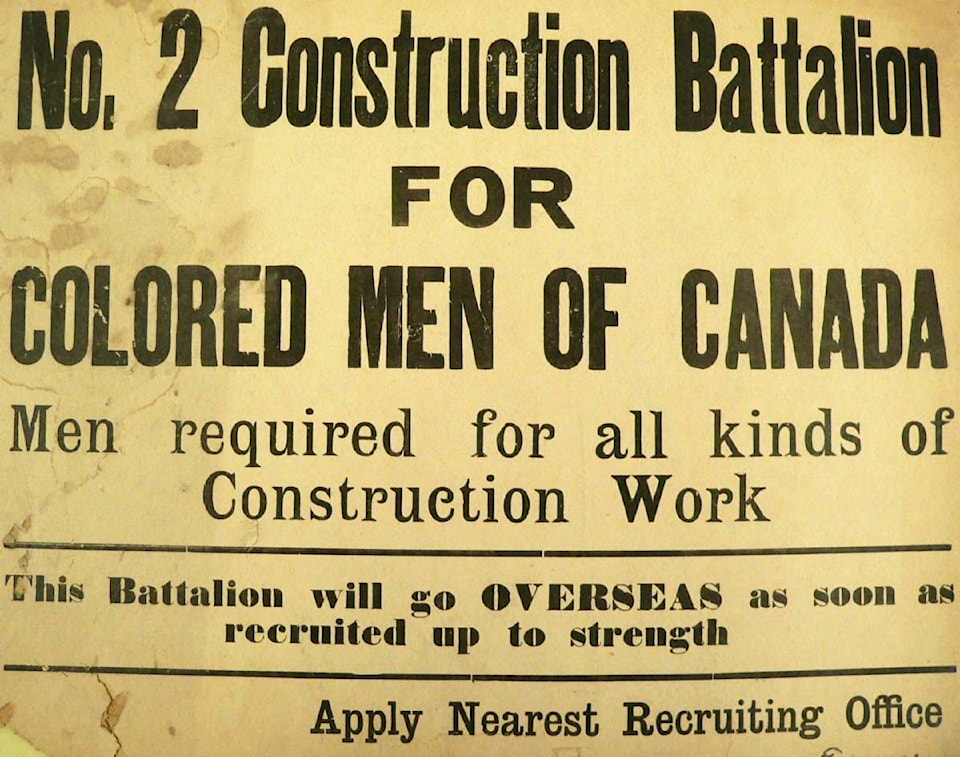On the occasion of Black History Month, we would like to share with you the story of the men of No.2 Construction Battalion. In a letter addressed to Last Post Fund Executive Director Ed Pahud by Douglas Ruck on behalf of the Black Battalion Historical Marker Society (BBHMS), Ruck describes No.2 Construction Battalion of the Canadian Expeditionary Force – also known as the Black Battalion – as a segregated battalion:
The Black Battalion was a Canadian segregated unarmed construction battalion that participated in the First World War. The battalion, simply stated, was the product of overt systemic, institutionally based racism that initially prohibited young Black men from joining the Canadian Expeditionary Forces but later, by way of a concession, they were permitted to serve as part of a segregated battalion.
The Black Battalion Historical Marker Society is located in Nova Scotia and is dedicated to identifying, preserving and ensuring the perpetual upkeep of the headstones and gravesites of the members of the Black Battalion. Douglas Ruck is co-chairman of that organization as well as holding the Chair of the Board of Governors for the University of King’s College. He is also the son of the late Calvin Ruck, author of The Black Battalion 1916-1920: Canada’s Best Kept Military Secret.
Member of the LPF – Nova Scotia Branch VP, Lieutenant-Commander (ret’d) Steve St-Amant, had been researching unmarked graves in the Provincial Archives when he stumbled across documents relating to a number of Veteran burials from the No.2 Construction Battalion. Seven soldiers were listed as being buried in section “CS,” of Camp Hill Cemetery. Confused, Steve contacted cemetery staff in the Halifax Regional Municipality, who informed him that “CS” was the acronym for “Coloured Section.”
In Steve’s own words: “This was an eye-opening moment for me, I was always aware of segregation in other parts of the world, but I did not expect to find it in my own backyard.”
His interest piqued, Steve decided to do some field work and walk the section to determine if the seven soldiers buried in “CS” all had markers. Indeed – six of them did. The seventh, Pte George Diggs, who had served with No.2 Construction Battalion, appeared missing or unmarked. Thanks to Steve’s perseverence and the support and assistance of the Halifax Regional Municipality, the Last Post Fund was able to place a marker to commemorate Pte Diggs, installed this past summer.
As we reflect on the importance of commemorating all those who have served our country, we acknowledge those whose service was given under the shadow of segregation, and whose memory has been lost or forgotten, and we renew our pledge to commemorate all Veterans. We owe them a duty of recognition and of gratitude.
Lest we forget.
~Source: Last Post Fund
_______________
Like us on Facebook
